 General
General  General Archive
General Archive  64 Since '64: Top Players of Cleveland's Title Drought Era: Rd 2, Pt 2
64 Since '64: Top Players of Cleveland's Title Drought Era: Rd 2, Pt 2
Bracket Breakdown, Round TWO, Part 2
By Andrew Clayman & Jeff Ellis
The second round wraps up this week as we take a closer look at some very intriguing battles for those all-important Sweet Sixteen berths. Can the Top Dawg somehow take down a Homerun King? Can Albert Belle run over a Mack Truck? Is Grady Sizemore turning into the baseball version of Austin Carr? Hell, we've even got Paul Warfield vs Rocky Colavito! So take a break from stabbing your Mangini voodoo doll and bask in the wondrous absurdity that is 64 Since '64.
Click Here to Vote In Round 2 of the 64 Since '64 Bracket
RD 1 Archive: Brown & Orange Regional | Wine & Gold Regional | Red & Blue Regional | Scarlet & Gray Regional
RD 2 Archive: Part I
Here we go now with the final 8 matchups of Round number Two.
Round 2, Red & Blue Regional
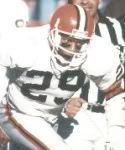
#1 Jim Thome vs #9 Hanford Dixon
Round 1: Thome def. Chones (81% of vote), Dixon def. Minnifield (66%)
ANDREW CLAYMAN: As discussed in round 1, the Thomenator is in a real uphill battle to get to the Final Four, despite rightfully earning a #1 seed as the Indians’ all-time homerun king. Case in point, he’s getting a bit of a challenge from #9 seed Hanford Dixon right now—a pretty telling statement on Tribe fans’ lingering and possibly even increasing bitterness over free agents gone elsewhere. In the first half of round 2, Jeff and I predicted that Clay Matthews would give Manny Ramirez all sorts of trouble for similar reasons. That has certainly been the case thus far. Fortunately for Thome, Dixon’s accomplishments in the Cleveland secondary (3 Pro Bowls, 26 picks) and role as the Top Dawg still won’t be enough to convince the more objective voters to jump the Thome ship just yet. Charlie Manuel’s favorite son should trot on to the Sweet Sixteen.
JEFF ELLIS: I’m definitely having trouble understanding how Thome is being challenged in this matchup. His betrayal never seemed as bad to me as Belle going to the division rival or Manny wanting 22 mill instead of 20. It’s the same reason I find it hard to have any ill will about CC or Cliff. When Cleveland can’t produce a competitive offer— guys are going to end up elsewhere one way or another. It’s the nature of the business. I realize that Hanford, by contrast, has stayed local even after his playing days, but I just can’t see how the Indians’ all-time home run king can lose to a man that might have been the #2 corner on his own team (despite what the first round votes indicated).
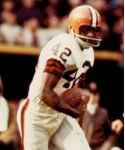
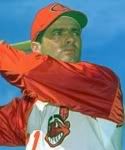
#4 Paul Warfield vs #5 Rocky Colavito
Round 1: Warfield def. Hafner (91%), Colavito def. Bingo Smith (83%)
AC: On the surface, this looks like the most interesting match of the whole tournament up to this point. But when cropped inside the context of a post-1964 universe, things start to lean considerably in the Hall of Famer Warfield’s direction. Sure, we’d have to discount Paul’s phenomenal rookie season during the Browns’ 1964 title run, but it also means setting aside Colavito’s prime pre-curse seasons, which took place in 1958 and 1959 (when he hit a combined 84 homeruns and drove in 224 runs). To be fair, Rocky really did produce more than people seem to remember when he was reacquired years later (.287, 26 HR, 108 RBI in 1965 and 30 more homers in 1966), but he was dealt away again and for good in the summer of love. Meanwhile, Warfield was the Browns most dangerous target from 1966 to 1969, making two Pro Bowls before going off to greater success in Miami. Amusingly, just like Rocky, Warfield then returned to Cleveland for a decent enough curtain call, catching 56 balls (8 of them TDs) for the Browns across 1976 and 1977. Sadly, Rocky may have been better as a Tiger, and Warfield as a Dolphin—but in Cleveland, in the title drought era, Warfield should prevail here.
JE: To add to the post ’64 point, you could say that the return of Colavito did more harm than good, since we parted ways with the eventual Rookie of the Year (Tommie Agee) and a first line starting pitcher (Tommy John). And despite what Andy said, I think Warfield had two of the top three seasons of his career as a Brown in 1968 and 1969, right before getting traded. And even with the great numbers he put up, he was basically a modern receiver playing before his time. Had Warfield come along just 10 or 15 years later, he may have gone down as the Jim Brown of pass catchers.
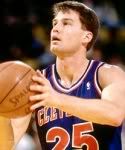
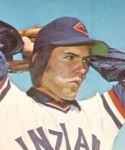
#3 Mark Price vs #6 Dennis Eckersley
Round 1: Price def. M.D. Perry (90%), Eckersley def. Doug Jones (51%)
JE: Coming out of Georgia Tech, Mark Price was considered slow, unathletic, and unlikely to make it in the NBA. He was drafted in the second round by Dallas and immediately dealt to Cleveland, where he proved his underdog worth by eventually beating out the more physically gifted Kevin Johnson for the starting point guard job. Mark probably would have been a more immediately valued commodity in today’s game, where teams stockpile long range shooters. But in the ‘80s, he had to prove he could run Lenny Wilkens’ high octane offense as a complete all-around player—a test he passed with flying colors. Mr. Eckersley, better luck over in the brackets on theoaklandfan.com.
AC: It was only a handful of votes that helped Dennis Eckersley slip by Doug Jones in round one’s closest contest. Now Eck’s reward is a swift exit at the hands of the Cavs' most popular player of the orange and blue era. As far as I know, Mark Price never had a giant billboard of himself downtown or a “Chosen One” tattoo on his chest, but he was pretty damn good nonetheless, running the point in Cleveland for eight years and leaving as the franchise leader in assists, steals, free throw percentage, and three pointers made (James has since stolen the steals title from him). A cheap shot from Rick Mahorn may have cost Price and the Cavs a shot at better things in that team’s prime (Mark missed nearly the entire ’90-’91 season), but overall, Price’s tenure in Cleveland is still fondly remembered. Eckersley, meanwhile, built his legend in Oakland over a decade after first emerging as a top young starter for the Tribe. He simply didn’t spend enough time here to warrant any further consideration.
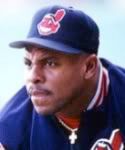
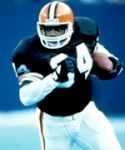
#2 Albert Belle vs #7 Kevin Mack
Round 1: Belle def. J. Carter (77%), Mack def. Kemp (92%)
JE: I was definitely a little concerned that Albert Belle might face the wrath of a bitter fanbase and get ousted in this matchup, but it looks like that bullet is going to be dodged. Lest we forget, Kevin Mack was no saint himself. He may have had a friendlier temperament, but his run-ins with the law got him in more hot water than Albert’s Halloween hijinx. In the end, both of these guys saw their careers end far too soon. Mack never got back in the flow after his cocaine conviction and various injuries, and Belle’s degenerative hip likely short-circuited what would have been a statistically sure fire Hall of Fame career.
AC: Incredibly talented and equally troubled, Belle and Mack were not players you wanted to stand in the way of, whether you were an opposing linebacker or Fernando Vina. Mack peaked in his rookie season, when he and Earnest Byner both gained 1,000 yards on the ground (something it’s hard to imagine the Browns ever accomplishing again), but his career numbers are still solid: over 5,000 yards rushing (5th in Browns history), 54 touchdowns, and two Pro Bowl appearances. While Mack’s potential was hampered by drug problems, Albert’s issues were more psychological. His constantly simmering rage earned him few friends, but when concentrated at the plate, it made him every bit as intimidating as Mack at the goal line. In roughly 6 full seasons with the Tribe, Belle posted an OPS of .950, hit 242 homers, drove in 751 runs, and hit .295. In the strike shortened ’94 season, his OPS was a ludicrous 1.152. While it’s mostly been forgotten now, Belle’s last homerun as an Indian—a game deciding grand slam off Armando Benitez in game 3 of the 1996 ALDS—was quite possibly the most epic thing I’ve ever seen on a baseball diamond.
Round 2, Scarlet & Gray Regional
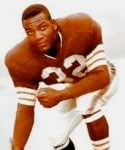

#1 Jim Brown vs #8 Larry Nance
Round 1: Brown def. L. Wagner (98%), Nance def. Slaughter (56%)
AC: Larry Nance certainly deserved a better fate. The best power forward in Cavalier history finished top 10 in the league in field goal percentage almost every season of his career. To this day, he ranks 14th in NBA history in shooting percentage, a few spots ahead of Charles Barkley, Wilt Chamberlain, and our own Brad Daugherty (#26 all-time). Nance also made the All NBA Defensive team three times as a Cav, which really speaks to his immeasurable all-around value (he is still 17th in NBA history in blocked shots). Unfortunately, Jim Brown is Jim Brown, so this is where Nance’s travels conclude. Today’s random Jim Brown stat: in his swan song 1965 season, Jimmie scored a career-best 21 touchdowns (4 receiving) and averaged a sickening 5.3 yards per carry—a number he’d actually bested in three previous seasons. He was good.
JE: It’s hard to argue that the Cavs made a mistake acquiring a guy whose number now hangs from the rafters, but the Larry Nance trade might just be the best bad deal you’ll ever see, if that makes any sense. Nance was clearly vital to the Cavs success during the late ‘80s and early ‘90s, but Cleveland probably dealt Kevin Johnson a hair too soon, before the eventual All-Star point guard had proven his true value, and the draft pick they threw in the deal became Dan Majerle—a potent shooter and athletic 2-guard who might have been just what the Cavs needed after dealing Ron Harper. Still, if we’re going to ponder “what ifs” as Cleveland fans, we might as well ponder infinity. Jim Brown wins, by the way.
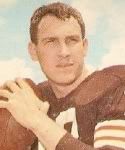
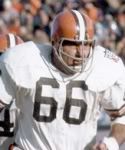
#4 Frank Ryan vs #5 Gene Hickerson
Round 1: Ryan def. Hershiser (58%), Hickerson def. Hargrove (66%)
AC: Quantifying the value of an offensive lineman is never easy, but it usually helps to observe the production of the playmakers around him. As Jim Brown himself would be the first to tell you, Gene Hickerson made him a better running back. It’s safe to say that he also made Frank Ryan a better quarterback, which makes this matchup an interesting one. Ryan was no one-trick pony. After the ’64 championship, he put together three more very strong seasons, including a couple more Pro Bowl appearances and a league leading 29 TD tosses in 1966. During his 7 years in Cleveland, he threw 134 touchdowns to just 88 interceptions (that’s 18 more TDs than Bernie Kosar in 24 fewer games). Still, it looks like this is one case where the spotlight finds the guard over the QB, as Hickerson’s long overdue Hall of Fame induction in 2007 is likely helping him win the popular vote—along with 6 Pro Bowls and 2 Hall of Fame RBs to vouch for him.
JE: To me, Frank Ryan is the great forgotten quarterback in Browns lore—which is especially odd considering that he was the last one who won anything. As a child I saw Kosar and heard all about Graham and Sipe, but Ryan’s name rarely came up. Maybe part of the downside of playing with such great players as Warfield, Kelly, Brown, Collins, etc., is that a player like Ryan winds up getting marginalized. Outside of Otto Graham, no QB in Brown’s history has a better resume in terms of big game wins and Pro Bowls. Hickerson was a member of Ryan’s great cast-- one of the best guards of his time and an eventual Hall of Famer. He was the best Browns offensive lineman of the ‘60s and maybe the best of all time. In the end, Gene got my vote—maybe because you had to go through him to get to the other guy.
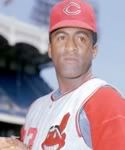
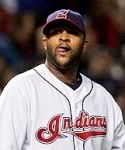
#3 Luis Tiant vs #6 CC Sabathia
Round 1: Tiant def. Franco (54%), Sabathia def. Nagy (60%)
JE: After getting tested a bit by Chuck Nagy, I don’t see how CC Sabathia is now drop kicking Luis Tiant in round two. Tiant might have played in another era, but his numbers speak for themselves. CC only pitched 2 more years in Cleveland than Tiant, so while he racked up more total wins and strikeouts, he had 76 more starts in which to do so. Extrapolating Tiant’s numbers, it’s safe to assume he would have matched Sabathia’s output over the same time span. I thoroughly appreciate Sabathia’s development into a fine pitcher, but living in New York City, I can tell you that even self aggrandizing Yankee fans don’t consider him a top tier, lights out pitcher—not just yet anyway. I voted for Tiant because there was a time when he was in that top 5 or so pitchers in the entire game, a place I don’t feel CC has been.
AC: I have to disagree with Jeff on at least one count. CC has clearly been in the top tier for the past two and a half years or so, if for no other reason than there aren’t that many dominant pitchers in baseball at the moment. As for this matchup, a few more good years in New York will have Sabathia’s career track looking remarkably similar to Luis Tiant’s, who spent his first 6 years in Cleveland before going on to greater fame and success in Boston. Sabathia was 106-71 as an Indian with a 3.83 ERA, 1.27 WHIP, and 7.4 SO/9. Tiant went 75-64 (skewed by a misleading 20 loss season in ’69) with a 2.84 ERA, 1.14 WHIP, and 7.8 SO/9. Tiant dominated hitters more often than Sabathia did, but as Jeff glossed over, it was also the age of the pitcher—higher mounds, no DH, etc. This perspective adds some greater weight to Sabathia’s accomplishments, and combined with modern day biases and melodrama, probably earns him his spot in the Sweet Sixteen.
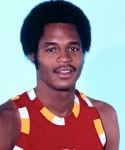
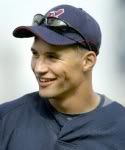
#2 Austin Carr vs #7 Grady Sizemore
Round 1: Carr def. Cliff Lee (69%), Sizemore def. Gary Collins (64%)
AC: If CC is the next Luis Tiant, is it possible that Grady Sizemore is Cleveland’s modern day Austin Carr— the young superstar who regresses due to injuries and never realizes his full potential, only to resurface later as a beloved color commentator on STO? Grady doesn’t talk much, so it’s doubtful. But how about this… Sizemore and Carr both played in 43 games in their rookie seasons and both made their first All-Star team in their third season. Spooky! In their fifth years, both players missed large chunks of time due to nagging injuries. If Grady continues down AC’s road, it’s not a totally bleak picture. Carr never returned to the 20 PPG days of his first three seasons, but from the ages of 28 to 30, he played in every single game for the Cavs and was a solid 15 point scorer. Sizemore turns 28 next year. Appropriately, the vote is very close at the moment, but with Carr’s script already written, I have to put AC into round 3. Hopefully, Grady will become a Final Four type player, but odds are better that he’ll be manning center field in the Bronx by the time he’s 30.
JE: I like silly cross-generational, apples and oranges comparisons as much as anyone, but Grady should make it past AC with out any issue. Yes, Carr did play in one All-Star game, but Sizemore already has 3 All-Star appearances to his credit along with two Gold Gloves and a Silver Slugger. I feel that, much like Doug Dieken, the reason AC is looking like a Sweet 16 candidate is because of what he has done with a headset on rather than a jersey. Sizemore has already done more in his career then AC accomplished in his, so I put the kid in round 3.
Next week, it's on to the Sweet Sixteen of 64 Since '64, as things really start to get interesting with some Icon vs Icon matchups.
- NBA Announces 2013-2014 Schedule
- Browns Ink Sharknado
- Sharknado A No-Show For Rookie Camp
- Trent Richardson Out Until Training Camp
- Browns Sign Brandon Jackson
- Carrasco Suspended Eight Games
- Browns Add to Wide Receiver Depth with David Nelson
- Browns Need to Learn from Past Draft Mistakes
- Browns Release Chris Gocong and Usama Young
- Browns Missing on Grimes Disappointing, But Not The End
The TCF Forums
- Movies coming out
rebelwithoutaclue (Tuesday, January 21 2014 12:56 PM) - 2015 Recruiting
jclvd_23 (Tuesday, January 21 2014 12:38 PM) - The 2014 Offseason Thread
Larvell Blanks (Tuesday, January 21 2014 12:25 PM) - Official- Browns Coach Search/Rumors
Larvell Blanks (Tuesday, January 21 2014 11:53 AM) - Chris Grant's first 3 drafts
Kingpin74 (Tuesday, January 21 2014 10:13 AM) - Mike Brown
YahooFanChicago (Monday, January 20 2014 11:15 PM) - 2014 Hoops Hockey Hijinx
jpd1224 (Monday, January 20 2014 4:44 PM) - 2014 Recruiting
jclvd_23 (Monday, January 20 2014 2:26 PM) - Wish List - #4 Pick
Hikohadon (Monday, January 20 2014 1:26 PM) - #1 overall pick Anthony Bennett
TouchEmAllTime (Sunday, January 19 2014 1:28 PM)



